Best Orlando Treatment for a
ADHESIVE CAPSULITIS (FROZEN SHOULDER)
Are you not able to continue your cherished hobbies or everyday activities because of sharp pain in your shoulder when you move? With our expert doctors’ help, you can get to the root of your symptoms and get back to doing what you love quicker and easier.
Read More Ask A QuestionBest Orlando Treatment for a
ADHESIVE CAPSULITIS (FROZEN SHOULDER)
Are you not able to continue your cherished hobbies or everyday activities because of sharp pain in your shoulder when you move? With our expert doctors’ help, you can get to the root of your symptoms and get back to doing what you love quicker and easier.
Read More Ask A QuestionHere Is Everything You Need To Know About A Frozen Shoulder, What Causes It, and The Best Way to Treat It
Click the tabs below to get direct answers to your questions
What is Adhesive Capsulitis (Frozen Shoulder)?
Often called a stiff or “frozen shoulder,” adhesive capsulitis occurs in about 2% to 5% of the general population. It affects women more than men and typically occurs in people who are over the age of 45. Of the people who have had adhesive capsulitis in one shoulder, 20% to 30% will get it in the other shoulder.
What are common causes of Adhesive Capsulitis (Frozen Shoulder)?
Adhesive capsulitis is the stiffening of the shoulder due to scar tissue, which results in painful movement and loss of motion. The actual cause of adhesive capsulitis is a matter for debate. Some believe it is caused by inflammation, such as when the lining of a joint becomes inflamed (synovitis), or by autoimmune reactions, where the body launches an “attack” against its own substances and tissues. Other possible causes include:
- Reactions after an injury or surgery
- Pain from other conditions—such as arthritis, a rotator cuff tear, bursitis, or tendinitis—that has caused you to stop moving your shoulder
- Immobilization of your arm, such as in a sling, after surgery or fracture
Often, however, there is no known reason why adhesive capsulitis starts.
Where does it hurt?
In most cases of a frozen shoulder, patients report diffused achy pain throughout the whole shoulder area. Patients can also report referred lateral shoulder pain. Usually there is a significant loss of range of motion in all planes. Shoulder impingement can also cause similar symptoms. Understanding the root cause of your pain is fundamental to treating your pain in the long run and will decrease your dependence on painkillers or treatment that only addresses the symptoms.
What are common symptoms of Adhesive Capsulitis (Frozen Shoulder)?
Most people with adhesive capsulitis have worsening pain and then a loss of range of movement. Adhesive capsulitis can be broken down into 4 stages, and your physical therapist can help determine what stage you are in:
Stage 1 – “Pre-Freezing”
During this stage, it may be difficult to identify your problem as adhesive capsulitis. You’ve had symptoms for 1 to 3 months, and they’re getting worse. There is pain with active movement and passive motion (movements that a physical therapist does for you). The shoulder usually aches when you’re not using it, but pain increases and becomes “sharp” with movement. You’ll have a mild reduction in motion during this period, and you’ll protect the shoulder by using it less. The movement loss is most noticeable in “external rotation” (this is when you rotate your arm away from your body), but you might start to lose motion when you raise your arm (called “flexion and abduction”)or reach behind your back (called “internal rotation”). You’ll have pain during the day and at night.
Stage 2 – “Freezing”
By this stage, you’ve had symptoms for 3 to 9 months, most likely with a progressive loss of shoulder movement and an increase in pain (especially at night). The shoulder still has some range of movement, but this is limited by both pain and stiffness.
Stage 3 – “Frozen”
Your symptoms have persisted for 9 to 14 months, and you have greatly decreased range of shoulder movement. During the early part of this stage, there is still a substantial amount of pain. Toward the end of this stage, however, pain decreases, with the pain usually occurring only when you move your shoulder as far you can move it.
Stage 4 – “Thawing”
You’ve had symptoms for 12 to 15 months, and there is a big decrease in pain, especially at night. You still have a limited range of movement, but your ability to complete your daily activities involving overhead motion is improving at a rapid rate.
To Get A "Insider's Look" At Our Treatment Approach And How We Get Results...
Click Below To Watch Our Exclusive Webinar! It's Simple, Short, and It's Free!

- Learn The Essential First Step... So You Can Get Pain Free Again
- See Why Treatment Needs To Be Individualized, Not Standardized...So You Get Faster Results!
- Learn How You Can Save Money...So You Don't Have To Waste $1000's On Unnecessary Treatments
To Get A "Insider's Look" At Our Treatment Approach And How We Get Results...
Click Below To Watch Our Exclusive Webinar! It's Simple, Short, And It's Free!

- Learn The Essential First Step...So You Can Get Pain Free Again
- See Why Treatment Needs To Be Individualized, Not Standardized...So You Get Faster Results
- Learn How You Can Save Money...So You Don't Have To Waste $1000's On Unnecessary Treatments
Can Adhesive Capsulitis (Frozen Shoulder) be treated?
Yes, frozen shoulder pain can be treated and with great results. Even better, many times it can be treated conservatively without needing injections, pain medications, or surgeries. The key to treatment is to solve the root cause of your pain so you can get the best results and a long-term outcome.
Some root causes of frozen shoulder can be:
- Forward head posture
- Previous shoulder injury that was not treated properly
- Rounded mid back
- First rib dysfunction
- Weak mid back and shoulder blade muscles
- Tight and hypomobile neck
- Rotator cuff tightness
- History or diabetes, poor sleep, anxiety
If you have failed multiple treatment approaches already, your clinician missed the real root cause of your pain and was just chasing the symptoms. The pain or symptom is the effect, not the cause. What do I mean by this? Say your fire alarm goes off in your house. Its purpose is to protect you and make you aware that something is wrong, i.e., that there is a fire in your house. The “alarm” is like your pain (your body’s way of telling your something is wrong) and the “fire” is the root cause. When the fire alarm goes off, you don’t run upstairs and just turn it off, right? You run through the house with the fire extinguisher, trying to find the room where the fire is at. You try to find out what caused the alarm to go off so you can put it out. Once the fire is out, then the fire alarm can go off. Solve the “root” cause of your pain, and then the pain (“the effect”) eventually goes away.
Additionally, there is a common root cause for frozen shoulder which many clinicians misdiagnose. They treat the shoulder pain with a cookie cutter approach, hoping it will work, and treat it as a simple muscle problem. They tend to rely on stretching, ultrasound, massage, and focus treatment directly on the shoulder joint. However, often the root cause is missed and the symptoms return. We have noticed that our patients with frozen shoulder respond much better when the neck is treated also! Treat the neck and shoulder, and get better results! So many healthcare clinicians treat pain like this and thus show poor treatment outcomes which results in the pain coming back. Why? They missed the root cause of your adhesive capsulitis shoulder pain. This is also the case when patients turn to injections, nerve blocks and other surgeries which are still not effective because the actual problem still is not solved, their treatment was just chasing the pain.
The first step in treatment is to identify the root cause of your pain. A specific and individualized treatment approach for your type of pain can lead to a successful outcome for you and resolve your symptoms for the long term. This is why you can’t rely on a standard cookie cutter approach; you need a customized and individualized treatment approach specifically for your type of frozen shoulder pain.
What happens if it goes untreated?
Minor case – If it is a minor case of frozen shoulder, you don’t really have frozen shoulder and you have been misdiagnosed. True frozen shoulder takes months to resolve. Many times frozen shoulder is misdiagnosed for hypomobility, tightness, impingement, etc. But, with treatment you can still get better in a few visits once the root cause and correct diagnosis is established. We still recommend that you get it checked out by a one of our board-certified physical therapists to ensure that it is just a minor case, to solve all risk factors, and to get the optimal outcome in the fewest visits needed. Most minor cases resolve on their own in time, or get better with some stretching and strengthening. But, the sooner you take action, the sooner you are pain free. (And research supports this!)
Severe case – If it’s more of a severe and chronic case of frozen shoulder, your pain will probably start to worsen and increase because the root cause of the pain is not being treated. Frozen shoulder is a complex case and we still don’t truly know what causes it yet. It starts in 3 phases: freezing, frozen, and thawing. Each of these phases can take months, and if you don’t do anything frozen shoulder can take 12-18 months to recover from and you may be left with only 75% of your shoulder ROM left at the end. Many people turn to pain medication at this time but this only blocks the pain for short term. You may not feel the pain when taking pain medications, but the underlying problem is still there. Many people say after the pain medication is stopped, then usually the pain returns and sometimes it returns even worse. It’s crucial to catch this in the freezing phase. This is when it is very painful and the shoulder is starting to tighten. We have had some patients catch it early enough and resolve everything in 3 months. Research has shown that a subacromial injection may help with this process at this phase in combo with physical therapy. If you let it go, eventually (about 3-6 months later), you will get to the frozen phase. The pain may decrease a little at this time but you will notice a severe lack of range of motion and you will be very restricted in all planes. You may start getting some neck pain, shoulder blade pain, and referred arm pain due to compensations. Eventually, you may hit the thawing phase when the shoulder starts to release and relax again. It will start getting looser with more range of motion, and you will just get shoulder pain due to the altered biomechanics and decreased the range of motion. If people let this go for 1-2 years, they may eventually get 75% of their ROM back and pain will continue to decrease. Once the root cause and underlying pathology is addressed, then we can start decreasing your pain, regardless of how chronic and severe the pain is. Many patients here still get great outcomes within 3-5 months even after failed surgeries, manipulations, and injections.
What outcome can you expect from treatment?
As we’ve discussed, the first step is to solve the root cause of your frozen shoulder pain. This is the most essential step to plan a treatment specialized for you and your unique type of pain. Your root cause will guide your treatment and dictate what is the best way to treat your pain. This, along with identifying risk factors that may be predisposing you to have your pain and injury, will allow you to start getting pain free again. The next step is to start decreasing pain, modifying activities, and start addressing all of the impairments causing your pain which we discovered during your evaluation. With each session, pain should start to decrease and you should start to regain range of motion with less pain and symptoms. Any radicular and referred pain should resolve fast as well. At this point, we begin light and basic strengthening only if it does not increase pain. Treatment will consist of a lot of manual therapy and light exercises.
The next step is to achieve full range of motion, (which should correlate to being pain-free) and now we can start progressive strengthening. Strengthening the muscles is crucial and research shows that this gives you the best long-term outcome! As you start to get stronger and maintain your mobility, your pain will continue to decrease if it is not already gone. Your increased strength will allow you to perform more activities and prevent flare-ups. This usually does take up to 4 weeks. As you clear our goals, then we can start easing you back into sport, golf, running, and whatever your favorite activities are. This is when we start winding down treatments and getting you back into functional strengthening, sport specific training, return to run programs, golfing, and whatever your goals are. In the end, we reassess everything, making sure we achieved all of our goals, your goals, that all risk factors are gone, and finalize your long-term home exercise program. There are many factors which can influence your outcome, but 85-90% of our patients respond well to our treatment approach and achieve a successful outcome when completing their plan of care.
To Get A "Insider's Look" At Our Treatment Approach And How We Get Results...
Click Below To Watch Our Exclusive Webinar! It's Simple, Short, and It's Free!

- Learn The Essential First Step... So You Can Get Pain Free Again
- See Why Treatment Needs To Be Individualized, Not Standardized...So You Get Faster Results!
- Learn How You Can Save Money...So You Don't Have To Waste $1000's On Unnecessary Treatments
To Get A "Insider's Look" At Our Treatment Approach And How We Get Results...
Click Below To Watch Our Exclusive Webinar! It's Simple, Short, And It's Free!

- Learn The Essential First Step...So You Can Get Pain Free Again
- See Why Treatment Needs To Be Individualized, Not Standardized...So You Get Faster Results
- Learn How You Can Save Money...So You Don't Have To Waste $1000's On Unnecessary Treatments
How is it diagnosed?
Often, physical therapists don’t see patients with adhesive capsulitis until well into the freezing phase or early in the frozen phase. Your physical therapist will perform a thorough evaluation, including extensive health history, to rule out other diagnoses. Your therapist will look for a specific pattern in your decreased range of motion; it’s called a “capsular pattern” and is typical with adhesive capsulitis. In addition, your therapist will consider other conditions you might have—such as diabetes, thyroid disorders, and autoimmune disorders—that are associated with adhesive capsulitis.
Do you need an X-ray and MRI imaging for frozen shoulder pain?
For most common orthopedic cases, imaging is not needed and the diagnosis can be made with a simple physical therapy evaluation. No need to waste thousands of dollars on unwarranted diagnostic imaging. We also have clinical tests which we can perform to help rule in and rule out pathologies that correlate to MRI findings (which is WAY cheaper than an MRI!). An expensive MRI may just tell us what we already know. Also, often times the positive findings found on x-rays, MRIs, and EMGs may not actually be the root cause of your pain. What does that mean? Many positive findings on an MRI are also found in asymptomatic (pain-free) individuals, so diagnostic imaging may not be able to tell us what is actually causing your pain. For example: many people have a herniated disc in their low back but do not have any low back pain. So if herniated discs can cause no pain, just because someone with low back pain has a herniated disc does not mean that is what’s causing their pain. The key is to find out if your clinical evaluation findings during your evaluation at Pursuit match the MRI findings. If so, then we can decide what is the best way to treat it.
How can a Physical Therapist treat it?
Your physical therapist’s overall goal is to restore your movement so that you can perform your activities and life roles. Once the evaluation process has identified the stage of your condition, your therapist will create an exercise program tailored to your needs. Exercise has been found to be most effective for those who are in stage 2 or higher.
Stages 1 and 2
Your physical therapist will help you maintain as much range of motion as possible and will help reduce the pain. Your therapist may use a combination of stretching and manual therapy techniques to increase your range of motion. The therapist also may decide to use treatments such as heat and ice to help relax the muscles prior to other forms of treatment. The therapist will give you a home exercise program designed to help reduce the loss of motion.
Stage 3
The focus of treatment will be on the return of motion, with your therapist using more aggressive stretching and manual therapy techniques. You may begin some strengthening exercises as well, and your home exercise program will change to include these exercises.
Stage 4
In the final stage, your therapist will focus on the return of “normal” shoulder body mechanics and your return to normal, everyday, pain-free activities. The therapist will continue to use stretching, strength training, and a variety of manual therapy techniques.
Sometimes, conservative care cannot reduce the pain. If this happens to you, your physical therapist may refer you for an injection of anti-inflammatory and pain-relieving medication into the joint space. Research has shown that although these injections don’t provide longer-term benefit for range of motion and don’t shorten the duration of the condition, they do offer short-term benefit in reducing pain.
How long does it take for recovery?
Recovery time for frozen shoulder depends on multiple factors:
- The severity and chronicity of your pain
- Whether your pain is an easy or complex case
- If the root cause of your pain was solved or if it was missed (this is the key to getting a great recovery!)
- How long you have been in pain for and when you need to be pain-free by
- Other therapies and treatments you have tried
- Which medical professional(s) you saw prior to seeing us
- How active you are in trying to resolve your pain
- Which treatment approach is chosen and if it is proven to work for your pain
There are many factors that influence your recovery time and every patient’s recovery time is different. If you do nothing and don’t pursue treatment, it could gradually get better on its own, you could continue to have the same pain persist, or it could continue to get worse. As stated earlier, most acute cases may or may not resolve in 4-8 weeks. If you get expert treatment that solves the root cause of your pain, some cases resolve in 1-3 weeks! Then you can get back to sports, exercise, and your favorite activities without flare-ups and recurrences. Some of our patients are pain-free in 1-3 visits and back to 100% in 2 weeks!
If it is a complex case with chronic pain, your recovery may take longer, but you can still get a good outcome. Some chronic cases can resolve as fast as 2 months but can take as long as 4-6 months. It varies with every patient because every case of frozen shoulder pain is different. Every patient’s recovery varies depending on the factors listed above. After a thorough evaluation here at Pursuit Physical Therapy, you will know your exact timeline of recovery, your prognosis, and when you should reach your goals.
How much does it cost?
The average cost of care for a case of spine pain in the US is $1800-$6600. This high price is due to many factors: the over-inflated cost of healthcare, the over expensive cost of unwarranted imaging (x-rays, CT scans, and MRIs) that is not needed, over-utilization of care (which increases the number of visits needed to be treated, requiring multiple visits to different doctors and physical therapists for the same diagnosis), and getting billed for unnecessary and unproven treatments that you don’t even need. All of these factors increase cost and this is why healthcare is so expensive. We strive to end that unnecessary, expensive cycle. In fact, we are currently publishing our first-year data with the University of Central Florida that shows the cost-effectiveness of our treatment approach.
This year, the average cost of our care was shown to be $814-$1141. Some of our patients get even as low as $315 for the full treatment! So if you have a deductible of $3,000-$10,000 and you have to pay out of pocket for your treatment, we can save you lots of money.
Remember, every case of pain is different and not all frozen shoulder pain is the same. It is hard to predict exactly how much your treatment is going to cost you. But after a thorough evaluation, we can tell you exactly what is causing your pain, how long it is going to take, what the best way to treat it will be, and exactly how much it is going to cost. We have no hidden fees, no co-pays, and no miscellaneous bills that you will be surprised by 3 months after you receive treatment. Your pain, your diagnosis, your goals, and what is best for you dictate your treatment and how much it will cost, and while it varies for every patient, treatment at Pursuit is still much more affordable than standard healthcare.
How long are sessions?
Our evaluations are always one-on-one with one of our board-certified specialists and 60-90 minutes long. We like to perform thorough evaluations so we can solve the root cause of your pain, identify all risk factors, and make sure that we do it right. After the evaluation, you will know your diagnosis, the root cause of why you have your pain and symptoms, your prognosis, an expected timeline of when you should see results, what the best way to treat your pain is, how much it will cost, and your expected recovery outcome. We want you to fully understand everything about your pain and injury. What is best for you and will get you the best outcome is what will dictate your care and treatment. There will be plenty of time for you to ask questions so we can make sure you fully understand why you have your pain and what the best way to treat it will be. After the evaluation is completed, all treatment sessions are 60 minutes going forward and still one-on-one with your physical therapist. You and your physical therapist will design a customized treatment plan that works for you and that will achieve your goals.
How can it be prevented?
The cause of adhesive capsulitis is debatable, with no definitive cause, so there is no known method of prevention. The onset is usually gradual, with the disease process needing to “run its course.”
What are the next steps?
Getting started is simple. The first step, and the key to getting you pain free again, is to solve the root cause or your case of pain. Remember, not all pain is the same. Your pain is different than someone else’s pain, even though it may be in the same area. If you’re ready to get pain free, give us a call at (407) 494-8835 or fill out the form below. The next step is to schedule your evaluation so we can solve the root cause for you. We’re happy to answer any questions you may have and we would love the opportunity to help you.
Solve the root cause of your pain
How Our Treatment is Different
We believe that working with a specific specialist for your care is the best way to solve the root cause of your pain. Work one-on-one with a Doctor of Physical Therapy every time your visit our office.
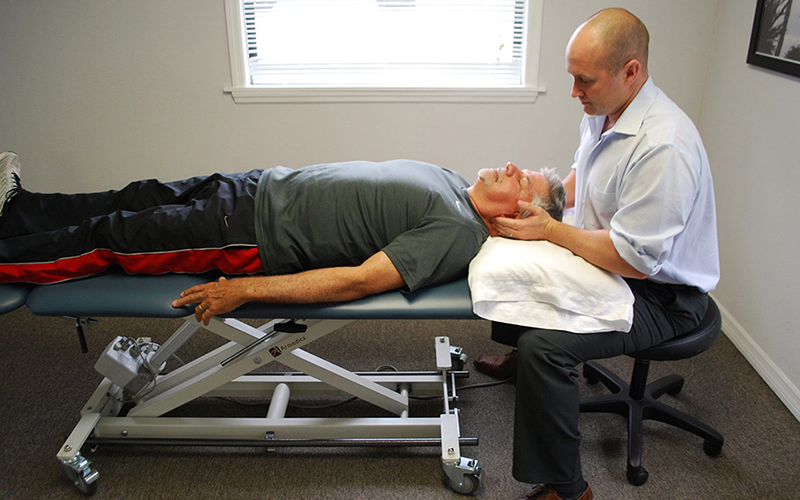
Exclusive one-on-one patient care
While most clinics will give you a limited amount of time with your Doctor, we believe that true results come from consistent one-on-one therapy.
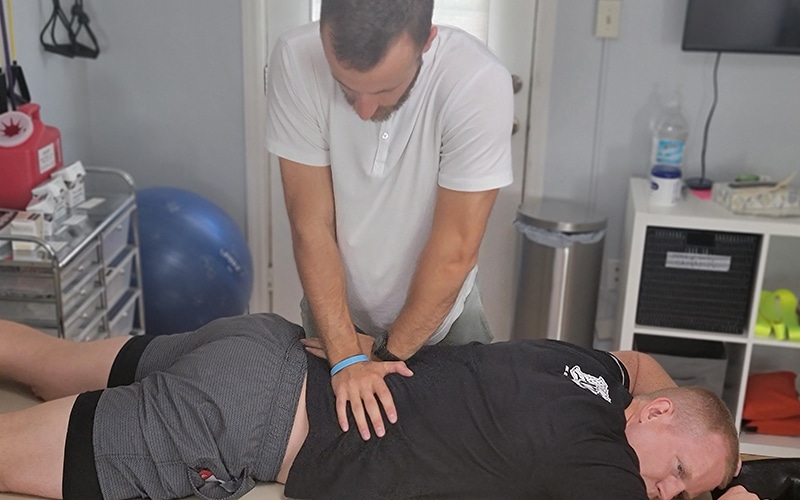
Work with your specialist every visit
Stop being handed off to trainees or non-Doctors for your Physical Therapy. At Pursuit, you'll work exclusively with your Doctor of Physical Therapy that specializes in your specific needs.
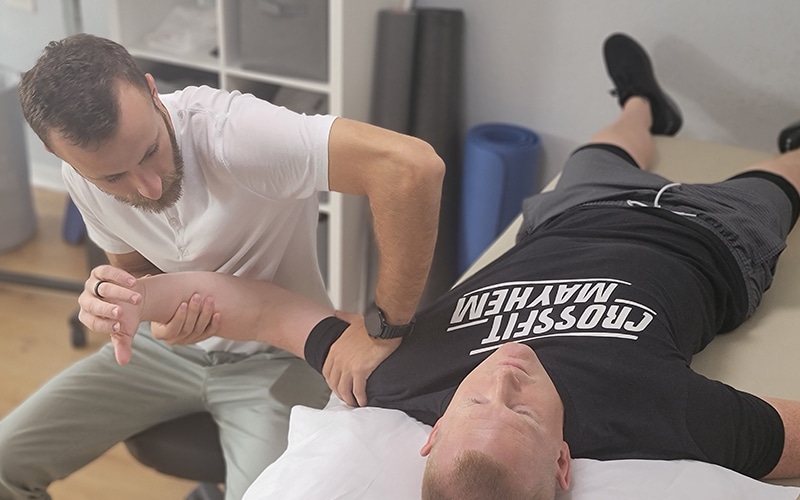
24/7 messaging access to your specialist
Ever have an issue or questions? We're here to help. Get 24/7 access to your specialist while you're under our care. Physical Therapy doesn't just happen when you're in our clinic, so we're here for you when you need us.
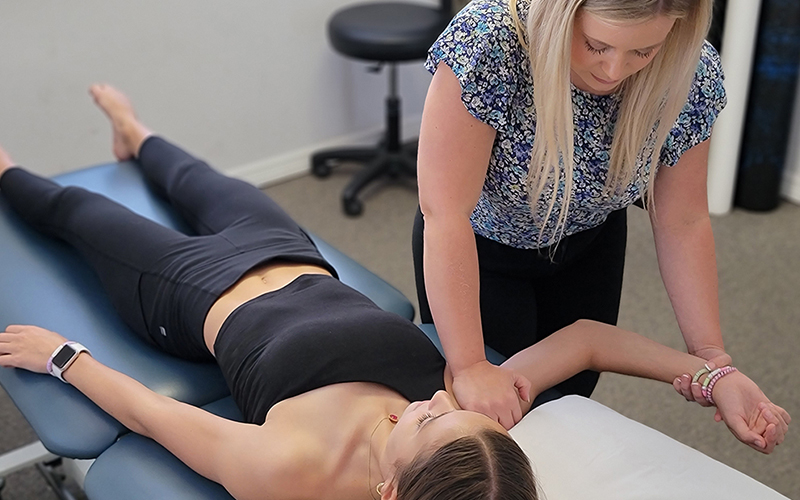
No waiting periods
Get off that waiting list and get the treatment you need. We're always ready to accept new patients, so you can get better faster and get back to a pain-free life that you deserve.
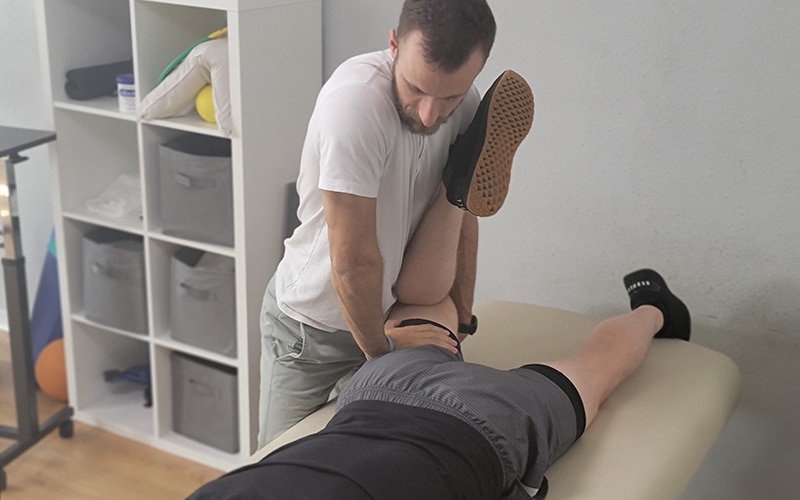
Not limited by insurance
Don't let the insurance companies tell you how much treatment you need. Avoid the limitations of short sessions that insurance provides and work with our Doctors when you need it and for as long as you need it.
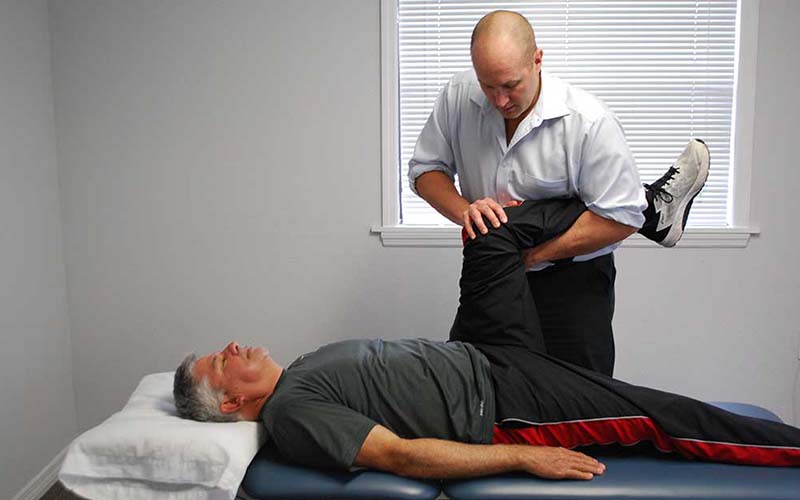
No painful injections, no expensive medications, no surgery
In order to truly solve your pain, we use a holistic approach to Physical Therapy, not relying on injections, medications, or surgery. Instead, we'll strengthen your body's weak points that are causing your pain.
MEET THE TEAM

RON MILLER, DPT, OCS, Cert DN
Doctor of Physical Therapy | Board Certified Orthopaedic Physical Therapy Clinical Specialist | Post-Doctoral Orthopaedic Residency Trained | Certified in Dry Needling | Titleist Performance Institute Certified
Dr. Ron Miller is the owner and founder of Pursuit Physical Therapy. His core belief is that it is not about the physician, the physical therapist, or the insurance company: it is about what is truly best for the patient. Dr. Miller started...

CAREY ROTHSCHILD, DPT, OCS, SCS, CSCS, CKTP
Doctor of Physical Therapy and Assistant Professor at the University of Central Florida | Board Certified Orthopaedic Clinical Specialist
| Board Certified Sport Clinical Specialist
Dr. Carey Rothschild is an Assistant Clinical Professor in the Doctor of Physical Therapy Program at the University of Central Florida. Dr. Rothschild earned a Bachelor of Health Science in Physical Therapy in 1999 from the University of Florida and a Doctor of Physical Therapy from Boston University in 2005...


MICHAEL FABRICK, DPT, Cert. DN
Doctor of Physical Therapy | Certified in Dry Needling | Pursuit Sports Performance Specialist | Professional Tennis Tour Physical Therapist
Dr. Michael Fabrick was born and raised in Hanover, Pennsylvania and attended Slippery Rock University where he received his Bachelor’s degree in Exercise Science. He then went on to receive his Doctorate Degree in Physical Therapy in May of 2020. During his final tenure as a Doctoral intern, he trained underneath Todd Ellenbecker, who is one of the world’s leading experts on shoulder rehabilitation and is the Vice President of Medical Services for the ATP World Tour...
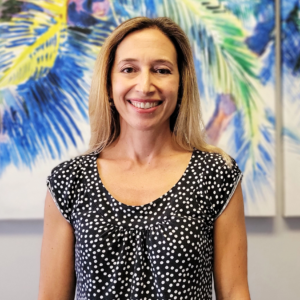
MARYANN DANIELS, PT, MCMT, IDN
Physical Therapist | Dry Needling Certified | Mastery Certified In Manual Therapy | Pelvic Floor And Post Partum Specialist
Maryann was originally born in Connecticut but moved to Florida with her family at the age of 9 and she grew up in Jupiter, Florida. She then went to college at the University of Central Florida...

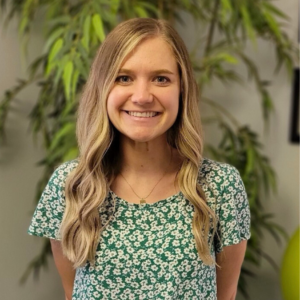
Kayla Cook, DPT, HSP, CSCS
Doctor of Physical Therapy | Hesch Sacroiliac Practitioner | Certified Strength And Conditioning Specialist | Ehlers-Danlos Syndrome Specialist | Volleyball Specialist
Dr. Kayla Cook was born and raised in Northern California and received her undergraduate degree in Kinesiology from California State University in Sacramento. She then received her Doctorate in Physical Therapy from The University of St Augustine for Health Sciences...
BECOMING PAINFREE IS EASIER THAN YOU THINK

Step 1:

Step 2:


 Pam S.
Pam S. Lisa B.
Lisa B.